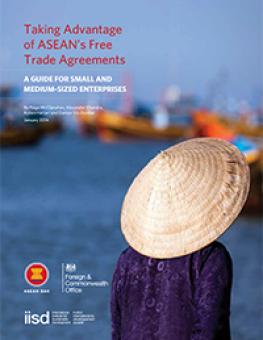
Taking Advantage of ASEAN's Free Trade Agreements: A guide for small and medium-sized enterprises
In the past decade, the member states of the Association of Southeast Asian Nations (ASEAN) have taken significant steps to reduce the barriers to trade among the 10 nations among their membership.
Over the same period, ASEAN officials have signed five major free trade agreements (FTAs) with other countries in the Asia-Pacific region. Such steps have helped to lower tariffs, streamline regulations, and generally simplify export and import processes. As such, these economic integration initiatives present significant opportunities for ASEAN-based businesses.
By using the opportunities that these FTAs provide, firms can find new markets for their products and potentially increase their output. Economic growth is good for businesses, but it is also good for the economies of the region. As such, by making full use of ASEAN's economic integration initiatives, SMEs can expand their businesses, create new jobs, offer their customers more goods and services, and generally help to promote economic growth and sustainable development across the region.
You might also be interested in
Britain Becomes First European Member of Trans-Pacific Trade Bloc
The United Kingdom becomes the first new member to join the Comprehensive and Progressive Agreement for Trans-Pacific Partnership (CPTPP) since it entered into force in 2018.
The CPTPP trade deal is a major threat to public health and warrants a health impact assessment
The UK government has joined one of the world’s largest free trade agreements, known as the Comprehensive and Progressive Agreement on Trans-Pacific Partnership (CPTPP). The CPTPP is not a new trade agreement waiting to be negotiated, but an already active one among 11 Pacific Rim countries (Australia, Brunei, Canada, Chile, Japan, Malaysia, Mexico, New Zealand, Peru, Singapore, and Vietnam). Joining the CPTPP commits the UK to several rules concerning trade in goods and services that have important implications for health. Although the US is not a member of the CPTPP, the agreement evolved from the Trans-Pacific Partnership, which initially included—and was shaped by—the US before President Trump withdrew the country from the deal in 2017. As such, many provisions, and even entire chapters, of the CPTPP are near carbon copies of other free trade deals negotiated by the US. But despite how much alarm was raised over the potential health effects of a free trade agreement with the US, there has been little discussion of the public health implications of the UK’s accession to this new deal.